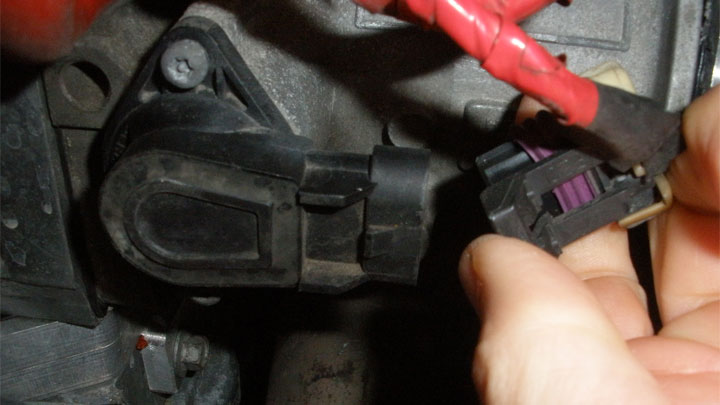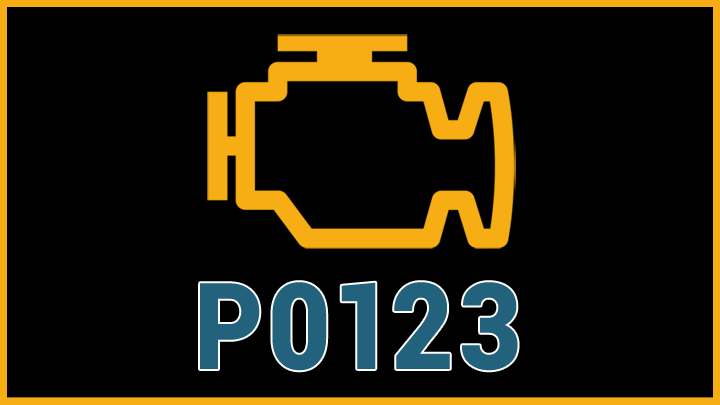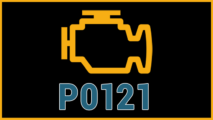Last Updated on July 22, 2022
In our modern fast-paced world, expedited transportation is a must. This, perhaps, is why we depend so heavily upon our personal vehicles to operate in the most flawless fashion possible. After all, a reliable vehicle can be depended upon under most any set of circumstances, providing a motorist with a greater peace of mind.
However, one would be quite presumptive to assume that their vehicle will always operate in absence of the occasional mechanical issue. Despite our best wishes, there will come a day when every vehicle exhibits less than stellar performance. Luckily, modern vehicles often prove capable of recognizing and identifying points of concern, in the form of diagnostic trouble codes (DTC).
One such diagnostic trouble code, which tends to be relatively common, is DTC P0123. This fault code is indicative of one or more issues within a vehicle’s throttle position sensor circuit, and is recorded by a number of vehicles across the world on an annual basis.
Read on to learn more about diagnostic trouble code P0123, as well as how to remedy such issues, should they arise in the future.
What Does Code P0123 Mean?
Diagnostic trouble code P0123 is indicative of an issue within a vehicle’s throttle pedal position circuit. More specifically, this code signifies that a high input condition exists within this particular circuit. However, to better understand this premise, one must first familiarize themselves with the operation of the TPS circuit as a whole.
A vehicle’s throttle position sensor (TPS) detects the relative position of a vehicle’s throttle pedal, allowing an engine’s ECM/PCM to compare this value to those present at the throttle body. An engine’s control software then specifies a certain amount of throttle plate actuation to provide the requested engine output.
The TPS itself operates as a variable resistor, as it manipulates a static 5V reference signal, in relation to an inputed throttle demand. This resisted voltage is provided to a vehicle’s ECM/PCM in the form of anticipated feedback, which is computed in a preset equation. This equation determines the necessary throttle plate response that is to follow.
In the case of DTC P0123, a vehicle’s management software has concluded that feedback from the TPS is incorrect or irrational, pointing to a high input condition. This issue is only resolved by diagnosing and eliminating the source of this high input condition itself.
Related: DTC P0121, DTC P0122, DTC P2135, DTC P2138
Symptoms of Code P0123
Diagnostic trouble code P0123 is often accompanied by a wide range of additional symptoms. Recognizing these symptoms can prove invaluable when attempting to diagnose the issue at hand.
The following are several of the most common symptoms associated with DTC P0123.
- Illuminated check engine light
- Erratic Idle
- Intermittent stalling
- Hesitation under acceleration
- RPM surge
Causes of Code P0123

Diagnostic trouble code P0123 can be caused by a host of underlying issues, some of which tend to be much more tedious to diagnose than others. However, by understanding these potential issues, one can expedite the course of repair.
The following are several of the most common causes of DTC P0123.
- Improperly aligned or loose TPS
- Shorted or grounded TPS wiring
- Faulty TPS
- Carbon-fouled throttle body
- Malfunctioning ECM/PCM
Is Code P0123 Serious?
Generally speaking, diagnostic trouble code P0123 is considered to be rather serious in nature. This is due to the fact that any fault related to a vehicle’s throttle position sensor circuit can prove detrimental to a vehicle’s overall driveability. This, in turn, can pose a number of safety related issues.
Diagnostic trouble code P0123 is known to cause stalling in the most severe of cases, especially when stopped in traffic at a light or intersection. This can be quite hazardous, even resulting in a collision if such a condition were to arise when not fully stopped.
In any event, the root cause of diagnostic trouble code P0123 should be diagnosed and repaired at the first available opportunity. This prevents issues of this nature from becoming even more dire in nature.
If you do not feel comfortable completing such repairs yourself, an appointment should be scheduled with a trusted repair shop as soon as possible.
How to Fix Code P0123

The following steps should assist you in diagnosing and repairing the root cause of your vehicle’s P0123 Diagnostic trouble code. As always, you should consult a good repair manual for your particular vehicle before conducting any such repairs.
#1 – Check For Additional DTCs
Before beginning the diagnostic process, check for the presence of any additional diagnostic fault codes. Any active codes should be thoroughly diagnosed before proceeding to the next step.
#2 – Inspect TPS Mounting
Begin by inspecting the throttle position sensor itself. The body of an engine’s throttle position sensor should be free from obvious defects, and should be securely mounted in place.
#3 – Inspect TPS Wiring
Next, thoroughly inspect your engine’s throttle position sensor circuit wiring for chafing, pinched spots, or other forms of damage. Any such damage uncovered during inspection should be thoroughly repaired.
Additionally, it is important to inspect any connectors related to this circuit for the presence of corrosion or damaged pins.
#4 – Check For 5V Reference
You will now check for the presence of a full 5V on your TPS’ reference wire with a quality multimeter. Any deviation in this voltage should be investigated by tracing this particular branch of the affected circuit.
#5 – Verify Ground Signal
Next, you will test to ensure that your engine’s TPS sensor is receiving a valid ground signal. This can be done with a multimeter, while consulting a vehicle-specific wiring diagram.
#6 – Test Feedback Voltage
You will now use the same multimeter to check for any irregularities in feedback voltage from the TPS, while having an assistant slowly actuate your vehicle’s throttle pedal.
Any dead spots within the sweep of a TPS sensor’s detectable range requires further investigation. This can be done by checking the resistance of the TPS at its connector.
A thorough inspection of the engine’s throttle body will also be necessitated. If the throttle body itself is not sticking, replacement of the TPS is advised.




